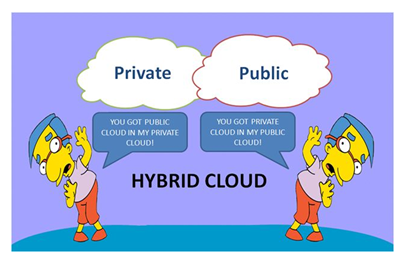The cloud computing is still an emerging technology with people discovering its true potential. One important feature which draws attention is Cloud Security.
Cloud computing can help businesses cut costs in any number of ways, but the information that cloud systems handle is varied, confidential with high security measures in place.
Here are some of the biggest actual security features that cloud providers use to protect client data, and make systems effectively secure against hacking and unauthorized access.
Multi-Factor Authentication
It’s a major source of user security for cloud systems, which often get deployed across many different business locations and individual access points. Essentially, multi-factor authentication just means authenticating users in a combination of ways. Using multiple authentication strategies or factors creates better security for digital systems.
In general, multi-factor authentication involves combining different categories of security inputs. One category is the password, which is an intangible concept that someone creates and uses for access. Another category is a physical possession, such as a traditional key, a key card or even someone’s mobile device.
A third category of security is called biometrics. This focuses on things that are inherent to an individual body. Unlike the above two categories, biometrics security components cannot be lost or misplaced. Biometrics uses things like fingerprint scanning, voice recognition and facial imaging.
Multi-factor authentication requires two or more of these different security components to work together, which makes systems much more secure.
Identity and Access Management
This category of security is closely related to authentication, but it works a bit differently. Here businesses have a way to assign access and privileges to individual identities that will be authenticated within the system. If multi-factor authentication is the method of access, then identity and access management is the assignment of clearances or the “permission vehicle” for letting people into the system.
Cloud services should incorporate this design, so that managers can think carefully about what information people need access to, and assign access based on those considerations. It’s important that people who are doing the work can get into the system to do their jobs, but the system must also keep a lid on sensitive data and ensure that it’s distributed to as few people as possible.
Encryption Standards and Key Handling Tools
Encryption is a core component of cloud security. In various ways, cloud providers encrypt data so that it can’t be stolen or leaked as it makes its way to and around the cloud. Each cloud company will have its own security encryption standard, where better encryption generally means better security.
Encryption standard along with key handling should be the focus of the enterprises. Encryption systems typically use sets of encryption keys that allow for authorized use of the data. Businesses can now opt for Amazon Web Services or Azure which offers a set of key management tools. Some cloud providers also offer key management services of their own that not only encrypt data, but also preserve the right kinds of access.
Cloud Encryption Gateways
It’s also important to figure out how and when data is encrypted and when it is decrypted, because again, without decryption, valuable data can become useless to those who need to handle it.
A cloud encryption gateway is very much like a virtual private network or VPN system. It provides a secure tunnel for data from one specific point to another. In VPN systems, data is often encrypted as it leaves a private network and makes its way through the public Internet. It’s decrypted on the other side, which is why people refer to it as a “security tunnel” for data.
A cloud encryption gateway acts the same way. It provides a consistent means and method of encrypting data as it leaves the private network and enters the cloud. It’s going to serve as both an effective means of security, and maintaining compliance if regulators start looking into how a company handles its data.
Mobile Platform Security
Cloud security also needs to address the rapidly growing area of IT that so many of us are now using to do all kinds of computing and perform all kinds of transactions: mobile. The mobile arena is becoming more and more a part of our lives, and cloud services need to anticipate the challenges of keeping data safe while it’s going to and from mobile endpoints.
Cloud mobile strategy needs to look at effective encryption, any vulnerabilities inherent in mobile operating systems or commonly used mobile applications. They should be able to explain to clients in a way that doesn’t make their heads spin.
You can contact us at info@sysfore.com or call us at +91-80-4110-5555 to better understand the requirements of the Cloud Security for your Enterprise use.



